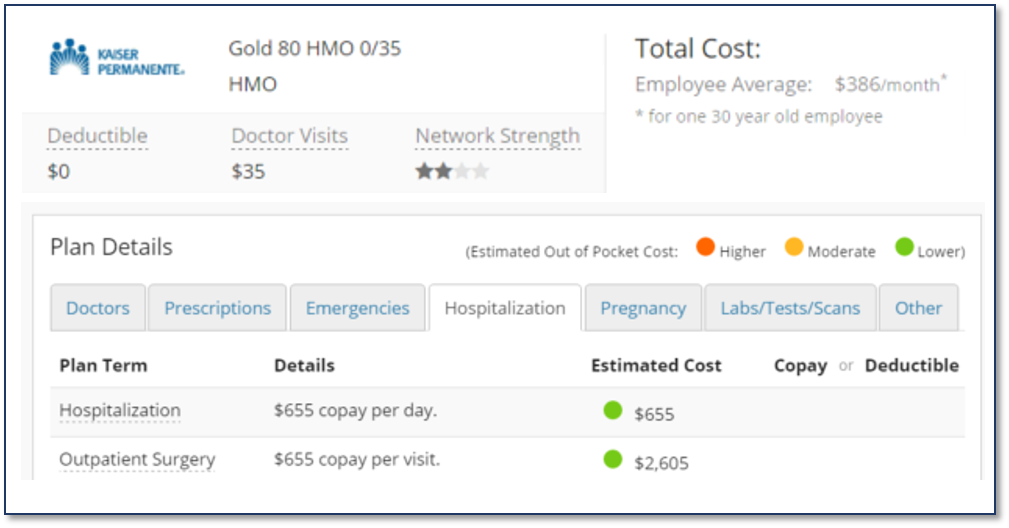The cheapest health plans often have highest deductibles. A deductible is the fixed amount you pay. If you or your family frequently visits the doctor, then obtaining a plan with a low copay should be a priority in your affordable health insurance policy. However, your plan may have a high deductible. Prescription Benefit and Copay Some plans do not include prescription drug benefits.
- If you opt for a lower copayment amount, you will have to pay higher premiums against your health insurance policy. When it comes to copay meaning, it can also be used interchangeably with co-insurance. Copay clauses are mostly levied for senior-citizen health insurance policies.
- Health Insurance Premiums. A health insurance premium is the monthly payment made to an insurance company to buy a policy. Premiums are the primary source of revenue for insurance providers. To make a profit, providers must take in more money in premium payments than they pay out in benefits.

The Special Enrollment period for 2021 health coverage on the federal marketplace is currently open and runs through August 15.
Health Insurance Low Deductible
Health insurance helps individuals and families pay for medical care and also provides coverage for unforeseen expenses due to illness or injury.
The cost (also called a premium) of a health insurance plan and the coverage it provides varies depending on many factors. These factors include your age, where you live, whether it’s an individual or a family plan, your tobacco use, etc. Your premium and coverage are also affected by whether the plan is private, employer-sponsored, public, or government-subsidized.
Your premium, specifically, will be affected by the following features, which are standard for every health plan:
- Deductible – the amount you have to pay for a service that is covered by your plan before your health insurance goes into effect
- Copayment (Copay) – the set amount you pay for a service or prescription drug
- Coinsurance – the percentage of the cost you have to pay for a service covered by your plan; for example, if your coinsurance is 20%, you pay for 20% of the cost, and your insurance pays for the remaining 80%
- Out-of-Pocket Limit – the most you will need to pay in a single year for any service that is covered by your plan
The Affordable Care Act
The Affordable Care Act (ACA), sometimes called Obamacare, went into effect in 2010. Based on its guidelines, no one can be denied health care coverage. Additionally, it provides subsidies for low income individuals and families. You can find out more about the ACA, its benefits, and how it works by visiting HealthCare.gov.
- Report Complaints & Fraud
- Health
- Life
- Auto
- Annuity
- Insurance & Safety Tips
So you’re shopping for health coverage–maybe even for the first time. You review your list of options and see that there’s a big gap between the prices of plans with the highest premiums as compared to plans with the lowest premiums. You ask yourself, “Why would I get a plan with a $350 per month premium when there is a plan with a monthly premium that’s only $200?”
Do I Qualify For Low Cost Health Insurance
On the surface that makes sense. But you shouldn’t shop for health coverage based on price alone. Choosing the right health plan for you is a personal decision. It involves carefully assessing your unique financial and health needs, and then determining which coverage options best matches those needs.
The lowest cost health plans can be a smart choice for the youngest, healthiest consumers, but for many people, it could be a mistake.
Here are seven reasons the cheapest health plan may not be right for you. You should consider these points before choosing a low cost health plan.
1. The cheapest health plans often have highest deductibles
A deductible is the fixed amount you pay for health care before your health insurance begins to pay. Under plans you find on healthcare.gov, preventive care is fully covered even before you meet your deductible, but you may have to pay for the entirety of other health care out of pocket if you never reach your deductible. As you might expect, the lowest cost plans tend to have the highest deductibles.
Note that a plan’s deductible is not the same as an out-of-pocket maximum, which is the most you will possibly have to pay for health care services in a year. That brings us to the next consideration, copays and coinsurance.
2. You may have high out-of-pocket costs for medical care
Plans with low premiums often have high coinsurance or copays, and plans with higher monthly premiums often have lower copays and coinsurance.
A copay is a fixed amount you pay for a specific health care service, usually when you receive the service. Even after you have reached your deductible, you are required to continue to pay copays if you have not reached your out-of-pocket maximum.
Similarly, coinsurance is your share of the costs of a health care service, which is a percentage of the cost for the service. If your plan involves coinsurance, it generally applies to non-preventive care until you have reached your out-of-pocket maximum.
Out-of-pocket maximum amounts for 2017 health plans on the health care exchange created by the Affordable Care Act may be up to $7,150 for an individual and $14,300 for a family.

3. You may need care for a chronic condition
If you have a chronic condition, for example diabetes, that requires you to receive a lot of medical care, it’s quite possible that the high copays and coinsurance of low-premium plans will require you to spend your entire out-of-pocket maximum on care.
The good news is that if you have a chronic condition, your medical needs are at least somewhat predictable. So consider the care that your condition calls for, and carefully assess how much it will cost under the plans you’re evaluating.
What Does Copay Mean
4. You may take prescription medications

It’s not just doctor visits that can require significant out-of-pocket payments. The cost of prescription drugs is rising rapidly, and much of that cost is transferred to patients. Prescription drugs can be especially costly under low premium health plans. Before choosing any health plan, look at your prescriptions and see if they are part of the plan’s formulary (the list drugs that your plan covers), and how much your copay will be for those drugs.
5. You may not be able to afford the risk
Essentially, when you choose a low-premium, high-deductible plan you’re wagering that you’ll only need preventive care during the plan year. If something unexpected happens and you do need medical care, you could end up spending a great deal, perhaps up to your out-of-pocket maximum, on care. Is that a bet you can afford to make?
Say you’re an individual choosing between two plans:
- $210/month premium, $7,150 deductible, $7,150 out-of-pocket maximum
- $310/month premium and $850 deductible, $5,000 out-of-pocket maximum
Under the lower premium option, the most you would pay in a year before your insurance kicked in would be $9,670. That’s the deductible plus the sum of your annual premiums. The higher premium plan would require you to spend $4,570 before your insurance kicked in.
With the higher premium plan in the example, it’s worth noting that if you have reached your deductible but not your out-of-pocket maximum, you may still need to pay coinsurance or copays. If you don’t have a major medical issue requiring hospitalization, it’s unlikely that your out-pocket expenses will be a lot higher than your deductible because copays for office visits are generally low. But if you are hospitalized and require costly care with the higher premium plan in the example, the maximum you’d spend towards medical care in a year could be less than the maximum you’d spend on care with the lower premium plan.
The math may be a little dizzying, but it’s necessary for making a smart choice about coverage.

6. You might neglect getting care or medications for cost reasons

Even with a low-premium plan, a significant portion of people skip medical care because of costs. For instance, a recent survey found that half of millennials have delayed health care treatment due to cost. Another study looked at the underinsured, which is defined as people with high-deductible plans, and “found that a quarter of adults with at least one chronic condition who met the criteria for being underinsured didn’t fill a prescription or skipped doses due to cost, compared with 7 percent of those who did not meet the criteria for underinsurance.”
7. You might be leaving subsidy money on the table
The Affordable Care Act (Obamacare) provides subsidies for health coverage to people who are earning up to 400 percent more (4 times) the amount of income that’s considered poverty level. For a single person in 2016, poverty is defined as an income of $11,880 per year or less. So an individual earning up to $47,520 is eligible for a subsidy. For a family of four, poverty is defined as an annual income of $24,300 or less, and subsidies are available to a four person family if their income is less than $97,200 per year. The subsidy is on a sliding scale, so a family earning twice as much as the poverty level would get a larger subsidy than a family earning three times the poverty level.
If you or your family’s annual income is close to poverty level, your subsidy may be enough to cover a plan with higher premiums and lower deductibles. In this case, selecting the cheapest plan would be like leaving money on the table.
Ultimately, choosing a health plan is a decision based on an array of very personal factors and considerations. But because you can never truly predict your health needs, there is necessarily an element of guesswork involved. The takeaway is that a low-premium plan will likely save you money if you don’t need much medical care beyond preventive care. Yet, if an unexpected medical issue arises, you may end up paying more out-of-pocket than you would have paid if you were covered by a higher priced plan, even when you factor in higher premiums into the equation.
